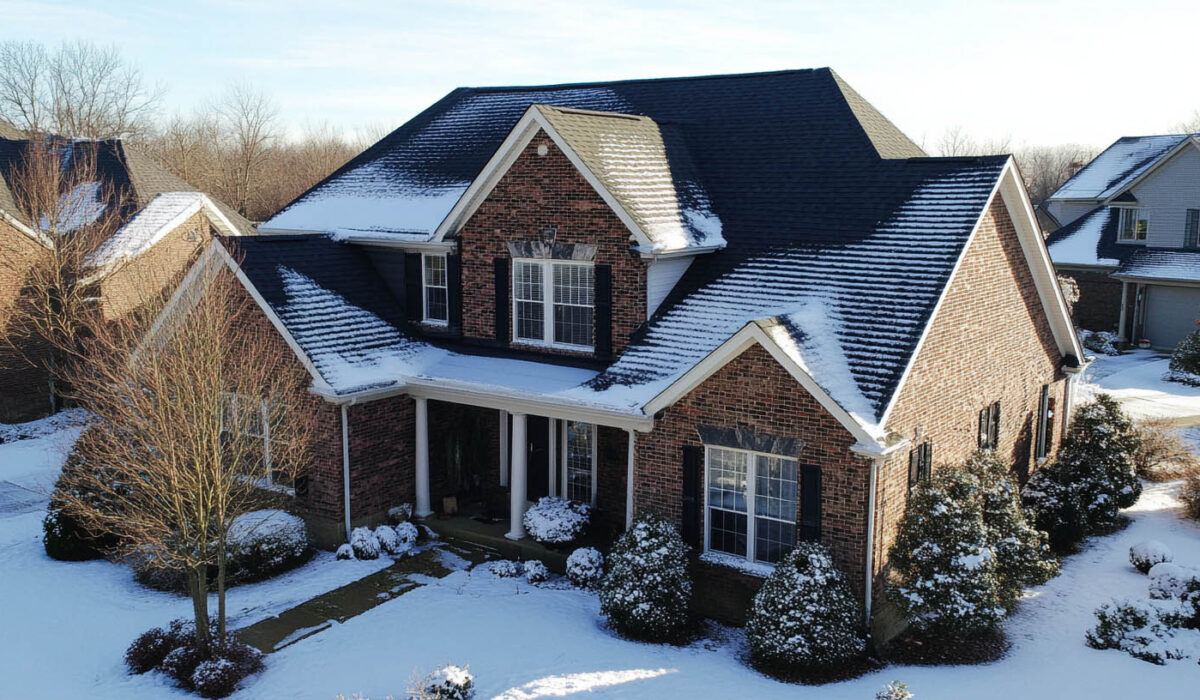Preparing your roof for the harsh conditions of winter is a critical step in safeguarding your home. Snow, ice, and freezing temperatures can cause significant damage if your roof is not properly maintained. Winterizing ensures your home remains protected, energy-efficient, and comfortable throughout the cold months.
The Importance of Winterizing Your Roof
Winter weather introduces unique challenges for homeowners. From ice dams to heavy snow loads, these conditions can compromise your roof’s integrity and increase repair costs. Winterizing not only extends the lifespan of your roof but also prevents leaks, insulation issues, and structural damage.
Benefits of winterizing your roof include:
- Enhanced durability against snow and ice accumulation.
- Prevention of costly water damage from leaks.
- Improved energy efficiency by sealing gaps and maintaining insulation.
- Reduced risks of mold growth and roof collapse.
Essential Steps to Winterize Your Roof
Step 1: Inspect Your Roof Thoroughly
Begin with a comprehensive inspection to identify vulnerabilities. Check for damaged shingles, cracked flashing, and areas where water might seep in. Use binoculars to examine hard-to-reach spots, or hire a professional roofing contractor for a detailed assessment.
Step 2: Clean Gutters and Downspouts
Clogged gutters lead to ice dams, which prevent proper drainage and force water under shingles. Clear leaves, debris, and dirt from gutters and ensure downspouts direct water away from your home’s foundation.
Step 3: Address Roof Repairs Promptly
Repair loose shingles, cracked flashing, or deteriorated sealant around vents and chimneys. Small issues left unattended can escalate into major problems when exposed to freezing temperatures and moisture.
Step 4: Install Roof Ventilation
Proper ventilation prevents moisture buildup and reduces the risk of ice dams. Ridge vents and soffit vents create a balanced airflow that regulates temperature in your attic, preventing condensation and mold growth.
Step 5: Add Attic Insulation
Adequate insulation helps maintain consistent indoor temperatures, preventing heat loss and reducing energy bills. Insulation also minimizes the risk of snow melting unevenly, which can cause ice dams.
Step 6: Trim Overhanging Branches
Heavy snow and ice can weigh down branches, causing them to snap and damage your roof. Regularly trimming overhanging branches protects shingles and prevents blockages in gutters.
How Roofing Professionals Enhance Winterization
While some steps can be DIY, working with a professional roofing contractor ensures optimal results. Professionals use advanced tools and techniques to identify issues that might be missed during visual inspections. They also provide customized solutions tailored to your home’s unique needs.
Omega Roofing’s Expertise in Roof Winterization
Based in Jackson, TN, Omega Roofing, LLC exemplifies excellence in roofing services. As an Atlas Pro-certified company, Omega Roofing combines top-tier craftsmanship with advanced materials to prepare roofs for winter’s challenges. Their commitment to integrity, accountability, and community engagement ensures homeowners receive reliable solutions that protect their homes year-round.
Common Winter Roofing Problems and Solutions
Ice Dams
Ice dams form when heat escapes through the roof, causing snow to melt and refreeze at the edges. This can lead to water backing up under shingles and into your home.
Solution: Improve attic insulation and ventilation to maintain consistent roof temperatures and prevent melting snow.
Heavy Snow Loads
Excessive snow accumulation adds stress to the roof structure, increasing the risk of collapse.
Solution: Regularly remove snow using a roof rake designed to prevent damage. For extreme cases, consult professionals for safe snow removal.
Condensation and Mold Growth
Poor ventilation traps moisture in the attic, creating an environment for mold and mildew.
Solution: Install proper ventilation systems to circulate air and reduce humidity levels.
Trends in Winter Roofing Solutions
The roofing industry is embracing innovations to combat winter challenges more effectively. Key trends include:
- Self-Regulating Heat Cables: These cables melt snow and ice to prevent ice dams.
- Energy-Efficient Shingles: Advanced shingles reflect heat, maintaining consistent roof temperatures.
- Smart Roofing Systems: IoT-enabled systems monitor roof conditions and alert homeowners to potential issues.
Frequently Asked Questions
How often should I inspect my roof during winter?
Inspect your roof at least once before winter and periodically after heavy snowfall or storms to identify potential damage.
Can I winterize my roof without professional help?
While some tasks can be DIY, hiring a professional ensures thorough inspections, proper repairs, and long-term solutions.
What is the best way to remove snow from a roof?
Use a roof rake with a long handle to clear snow without climbing on the roof, minimizing the risk of damage or injury.
How does insulation help prevent ice dams?
Insulation reduces heat transfer from your home to the roof, preventing snow from melting unevenly and refreezing at the edges.
Are heat cables worth the investment?
Heat cables effectively prevent ice dams and protect your roof. They are especially beneficial for homes in regions with heavy snowfall.
Conclusion
Winterizing your roof is essential to protecting your home against harsh weather conditions. By taking preventative measures and working with trusted professionals like Omega Roofing, LLC, you can ensure your roof remains durable, efficient, and safe throughout the winter season. Investing in proper maintenance today saves you from costly repairs tomorrow, providing peace of mind and lasting protection for your home.
Read also: Finding the Best Roofing Company: A Comprehensive Guide

